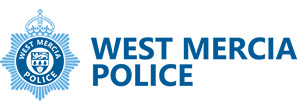|
||||
|
||||
|
|
||||
|
Good afternoon Resident, We have had a report of what appears to have been an attempt to cause a CRASH FOR CASH collision on the A41 in Newport. The vehicle, described as a black Seat Leon is said to already have rear end damage. It is also said to have been seen on the A518. Please be careful on the roads and give plenty of room to motorists ahead or approaching you.
What is CRASH FOR CASH? CRASH FOR CASH collisions are staged to make fraudulent and exaggerated insurance claims for vehicle damage, personal injury, and other 'costs'. The money is sometimes used to fund more serious crimes. Usually, where one vehicle hits another from behind, it’s the driver of the car behind that’s deemed to be at fault. So, in CRASH FOR CASH scams the aim is to deliberately stage or induce an accident for which the other (following) driver can be blamed: Fraudsters will target the vehicles most likely to have insurance and drivers least likely to cause a scene so mums with children in the car, older drivers, well-maintained cars, and cars with private plates may all be at higher risk.
This video perfectly demonstrates some of the behaviours that can be observed by those involved in CRASH FOR CASH scams… https://youtu.be/NJ8Yf9VoJgs?si=VWMzn48onkuT_PYc
What is FLASH FOR CASH? In 'flash for cash', a fraudster will flash their headlights at you, apparently to beckon you out of a junction or filling station, only to speed up and induce a crash for which you’ll be blamed – "I was driving along normally and you just pulled out without looking!"
Do dashboard cameras help? More and more drivers are installing ‘dash-cams’ in their car to protect against this type of fraud or even to protect themselves against possible charges of careless driving such as tailgating or lane-hogging. Cameras continuously record HD quality video to a memory card, constantly overwriting previously recorded footage. If you're involved in an incident the related footage can be saved for viewing on a PC together with speed and GPS location data and shared with the police or your insurer. HD quality video linked to GPS location data can help protect you against crash for cash scams and can help establish who was involved and who was to blame in the event of an accident too.
How can I avoid becoming a victim of CRASH FOR CASH?
What should I do if I think I've been a victim of CRASH FOR CASH? If you've been involved in a collision that you suspect may have been deliberately induced:
| ||||
Reply to this message | ||||
|
||||
|
|
||||

|
|







